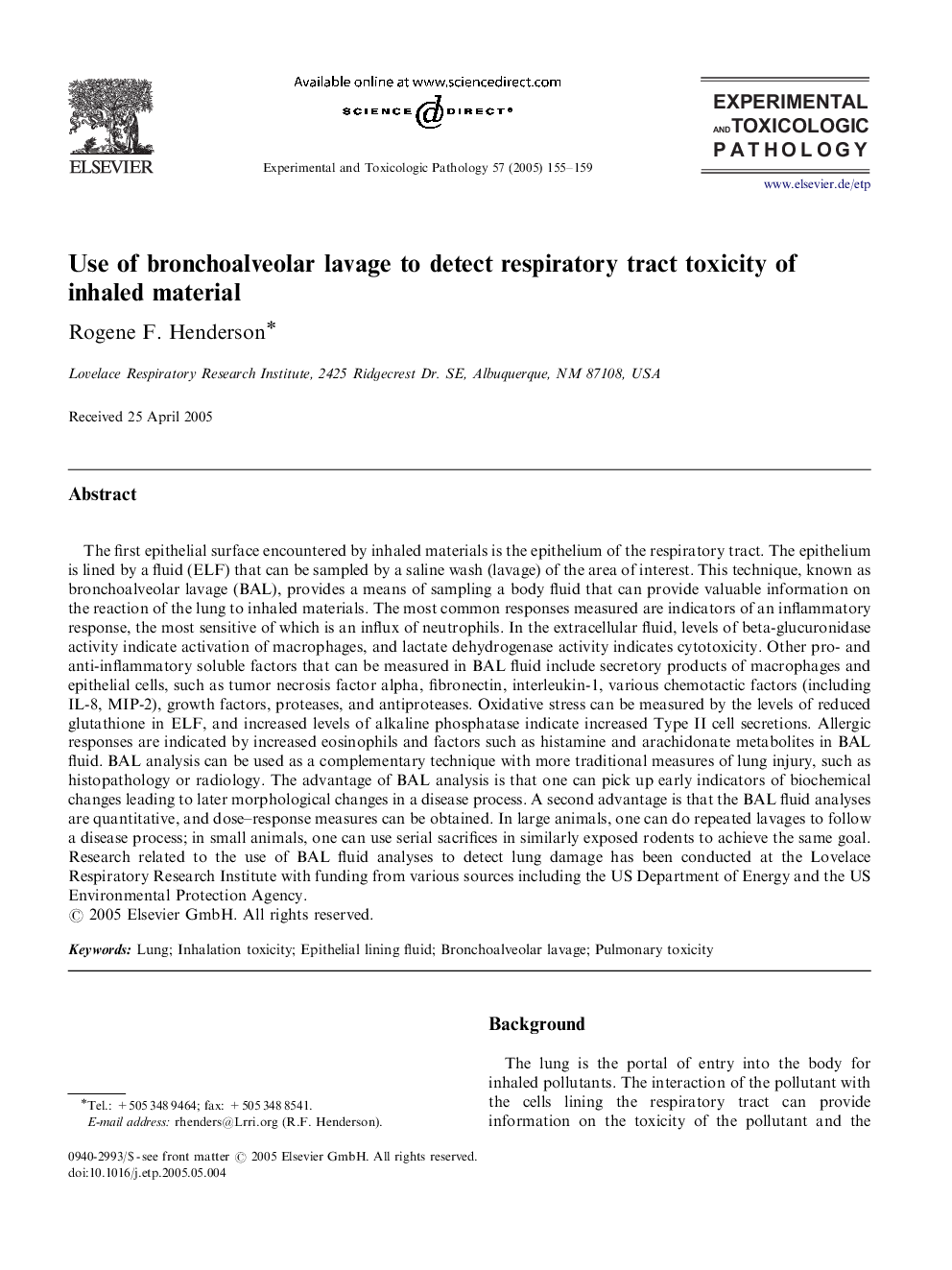| کد مقاله | کد نشریه | سال انتشار | مقاله انگلیسی | نسخه تمام متن |
|---|---|---|---|---|
| 9000457 | 1116528 | 2005 | 5 صفحه PDF | دانلود رایگان |
عنوان انگلیسی مقاله ISI
Use of bronchoalveolar lavage to detect respiratory tract toxicity of inhaled material
دانلود مقاله + سفارش ترجمه
دانلود مقاله ISI انگلیسی
رایگان برای ایرانیان
کلمات کلیدی
موضوعات مرتبط
علوم زیستی و بیوفناوری
علوم کشاورزی و بیولوژیک
علوم دامی و جانورشناسی
پیش نمایش صفحه اول مقاله

چکیده انگلیسی
The first epithelial surface encountered by inhaled materials is the epithelium of the respiratory tract. The epithelium is lined by a fluid (ELF) that can be sampled by a saline wash (lavage) of the area of interest. This technique, known as bronchoalveolar lavage (BAL), provides a means of sampling a body fluid that can provide valuable information on the reaction of the lung to inhaled materials. The most common responses measured are indicators of an inflammatory response, the most sensitive of which is an influx of neutrophils. In the extracellular fluid, levels of beta-glucuronidase activity indicate activation of macrophages, and lactate dehydrogenase activity indicates cytotoxicity. Other pro- and anti-inflammatory soluble factors that can be measured in BAL fluid include secretory products of macrophages and epithelial cells, such as tumor necrosis factor alpha, fibronectin, interleukin-1, various chemotactic factors (including IL-8, MIP-2), growth factors, proteases, and antiproteases. Oxidative stress can be measured by the levels of reduced glutathione in ELF, and increased levels of alkaline phosphatase indicate increased Type II cell secretions. Allergic responses are indicated by increased eosinophils and factors such as histamine and arachidonate metabolites in BAL fluid. BAL analysis can be used as a complementary technique with more traditional measures of lung injury, such as histopathology or radiology. The advantage of BAL analysis is that one can pick up early indicators of biochemical changes leading to later morphological changes in a disease process. A second advantage is that the BAL fluid analyses are quantitative, and dose-response measures can be obtained. In large animals, one can do repeated lavages to follow a disease process; in small animals, one can use serial sacrifices in similarly exposed rodents to achieve the same goal. Research related to the use of BAL fluid analyses to detect lung damage has been conducted at the Lovelace Respiratory Research Institute with funding from various sources including the US Department of Energy and the US Environmental Protection Agency.
ناشر
Database: Elsevier - ScienceDirect (ساینس دایرکت)
Journal: Experimental and Toxicologic Pathology - Volume 57, Supplement 1, 22 July 2005, Pages 155-159
Journal: Experimental and Toxicologic Pathology - Volume 57, Supplement 1, 22 July 2005, Pages 155-159
نویسندگان
Rogene F. Henderson,